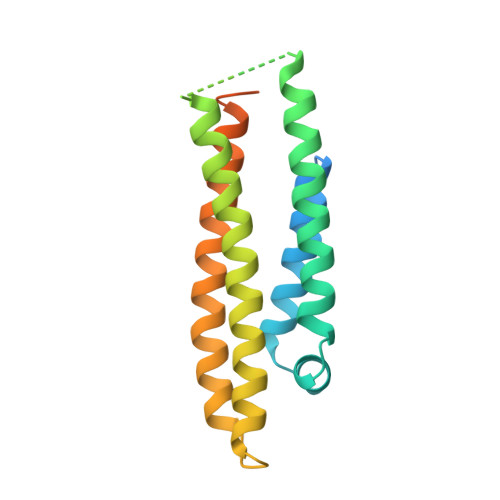Novel mechanism for defective receptor binding of apolipoprotein E2 in type III hyperlipoproteinemia.
Dong, L.M., Parkin, S., Trakhanov, S.D., Rupp, B., Simmons, T., Arnold, K.S., Newhouse, Y.M., Innerarity, T.L., Weisgraber, K.H.(1996) Nat Struct Biol 3: 718-722
- PubMed: 8756331
- DOI: https://doi.org/10.1038/nsb0896-718
- Primary Citation of Related Structures:
1NFN, 1NFO - PubMed Abstract:
The defective binding of apolipoprotein (apo) E2 to lipoprotein receptors, an underlying cause of type III hyperlipoproteinemia, results from replacement of Arg 158 with Cys, disrupting the naturally occurring salt bridge between Asp 154 and Arg 158. A new bond between Asp 154 and Arg 150 is formed, shifting Arg 150 out of the receptor binding region. Elimination of the 154-150 salt bridge by site-directed mutagenesis of Asp 154 to Ala restored the receptor binding activity to near normal levels. The X-ray crystal structure of apoE2 Ala 154 demonstrated that Arg 150 was relocated within the receptor binding region. Our results demonstrate that defective binding of apoE2 occurs by a novel mechanism of the replacement of one salt bridge with another.
- Gladstone Institute of Cardiovascular Disease, University of California, San Francisco 94141-9100, USA.
Organizational Affiliation:
















